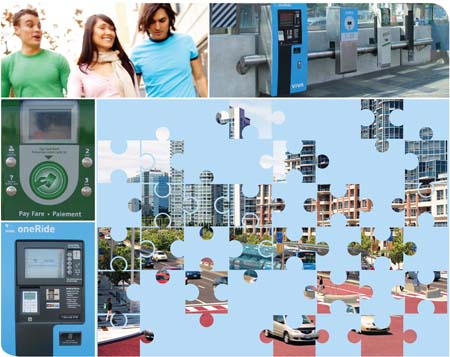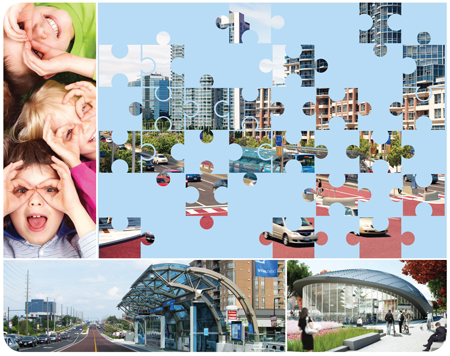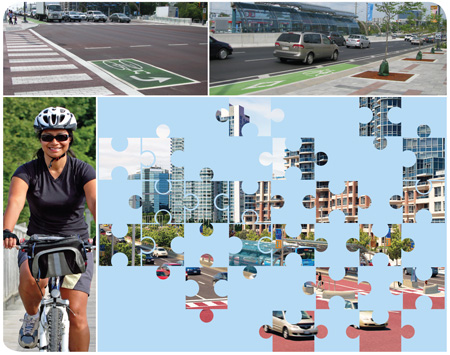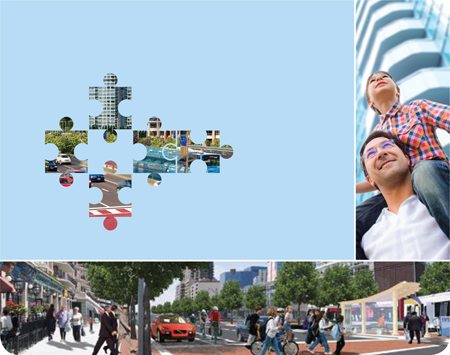The Bayview Towers opened on September 1 for service, just in time for back to school. If you’re in the area near Highway 7 between Bayview and Chalmers/South Park you’ll have noticed two attractive buildings, sporting vivaNext symbols, built right next to the Bayview Bridge. Here’s a description of the Bayview Towers, and how they’re going to make life more convenient and comfortable for York Region transit users.
The two handsome glass and concrete buildings, one on each of the north and south sides of Highway 7, are there to provide convenient access for people on Bayview Avenue wanting to connect to the viva system, and vice versa. These buildings replace the stairs that used to be the only way people could make that connection.
Providing elevator access was always seen to be the ideal solution to ensure everyone would be able to move easily from Bayview down to Highway 7, but because elevators need to be located in spaces with constant temperatures and protected from the elements, we needed to create actual buildings around them.
That’s why we have built the Bayview Towers. The buildings are not bus stations – there are curb-side vivastations on both the north and south sides of Highway 7. The buildings are both fully accessible, and each has an elevator that will whisk people up to the level of the Bayview Bridge, as well as an interior stairwell.
Inside, the Towers are airy and well-lit, with glass walls making the interiors clearly visible to Highway 7. With full security coverage including cameras that can monitor the entire building and emergency call buttons on all levels that connect directly to YRT dispatch, people will feel safe using the towers at all times.
At the top level, people will access the Towers via pedestrian bridges that enter onto the sidewalks on the Bayview. Changes to YRT and Viva routes will go into effect now that the Towers are open, so check out the schedules before you head out.
All in all, we’re proud of these great new additions to our rapidway system, which are going to improve connectivity for everyone using Viva and YRT.










